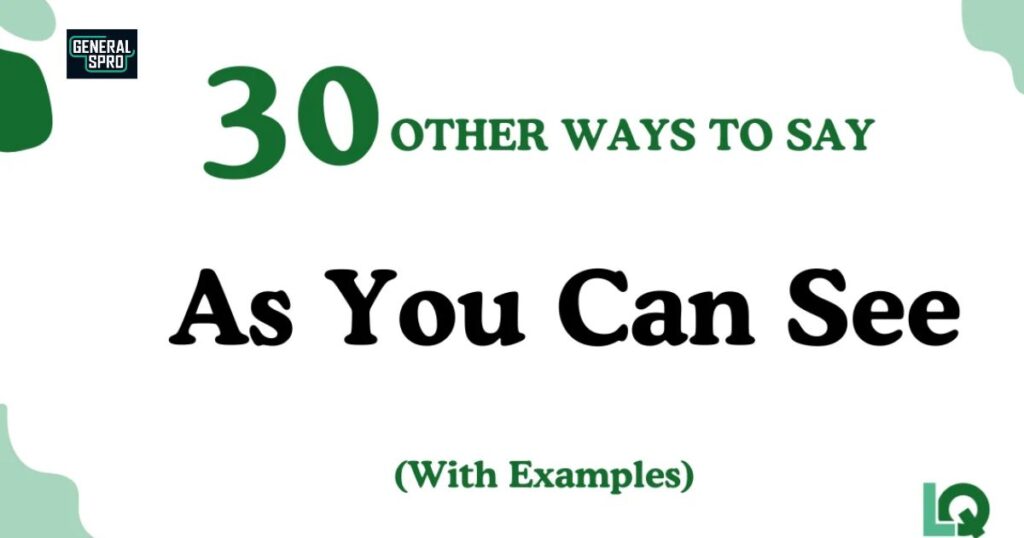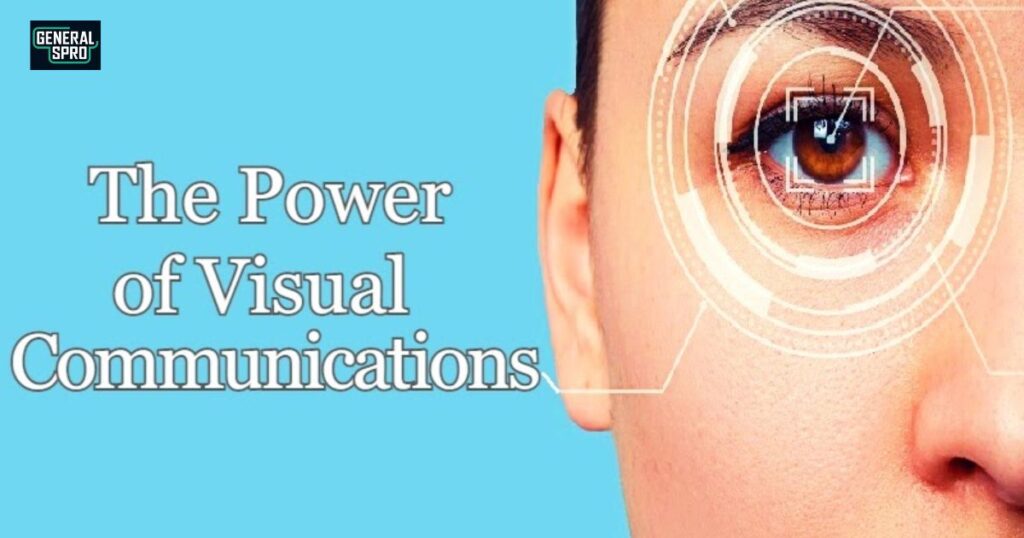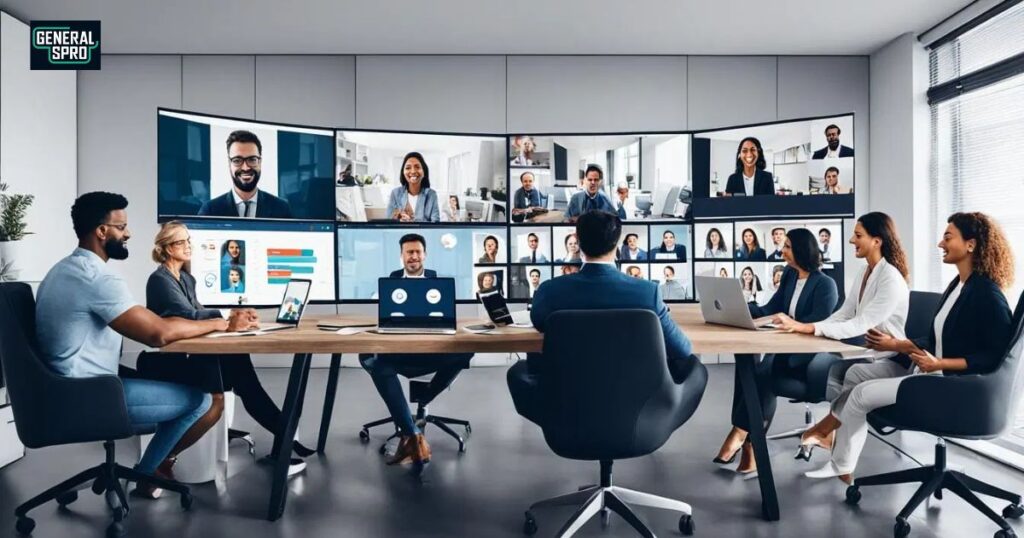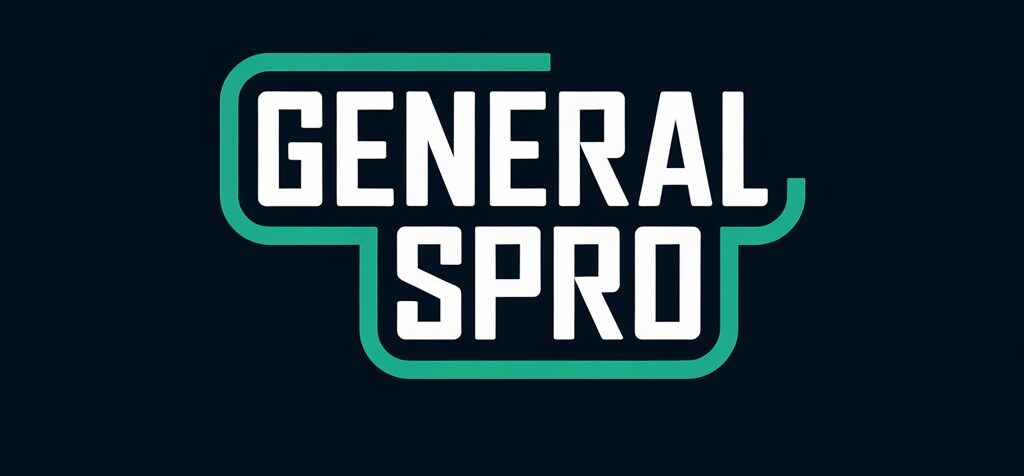Effective communication often hinges on how we present information to others. While “as you can see” might seem like a convenient phrase to point out the obvious, relying too heavily on this expression can make your writing feel repetitive and less engaging.
In this comprehensive guide, we’ll explore various alternatives that can help you convey visual understanding and present information more effectively.
Is It Professionally Good to Use “As You Can See”?

The phrase “as you can see” serves a specific purpose in professional communication – it directs attention to something visible or obvious.
However, using it repeatedly can weaken your message and potentially come across as condescending. Professional writing demands variety and precision in language, especially when conveying visual evidence or highlighting important points.
Consider this: when you use “as you can see” frequently, you might unintentionally create a passive viewing experience rather than engaging your audience actively.
The key lies in choosing alternative expressions that maintain clarity while fostering engagement.
Professional communication should guide readers through information naturally, using diverse phrases for presenting visible information and demonstrating key points.
Comprehensive List of Alternatives to “As You Can See”
Example: Business Report Email
“Evidently” carries a tone of professional certainty while maintaining objectivity. In business communication, this alternative works particularly well when presenting data-driven conclusions.
“Evidently, our Q4 sales have increased by 45% compared to last year’s figures, indicating the success of our new marketing strategy.”
This example demonstrates how “evidently” can introduce factual information while maintaining a professional tone. It’s especially effective in situations where you’re highlighting clear trends or results.
Example: Project Status Update
“Clearly” offers a direct way to emphasize obvious conclusions or developments. It’s particularly useful in project management contexts:
“Clearly, the implementation of our new workflow system has reduced processing times by 30%, exceeding our initial expectations.”
Example: Teaching Scenario
This phrase works exceptionally well in educational or training contexts where you’re building upon previously presented information:
“As demonstrated in our earlier simulation, the new software reduces data entry time by 50%.”
Example: Financial Presentation
“As shown” provides a professional way to reference visual data or charts:
“As shown in the quarterly report, our profit margins have improved consistently across all departments.”
Example: Client Feedback Email
This phrase offers a softer, more diplomatic way to point out observations:
“It’s apparent that your team’s input has significantly improved the project’s direction.”
Understanding the Power of Visual Communication

In professional settings, the way we direct attention to visual elements can significantly impact how our message is received.
Visual communication goes beyond merely pointing things out – it’s about creating a connection between the presenter and the audience.
When we thoughtfully choose our words to highlight visual information, we enhance comprehension and engagement.
The Psychology Behind Directive Phrases
Research in communication psychology shows that phrases directing visual attention can either build rapport or create distance.
The traditional “as you can see” might inadvertently suggest a hierarchical relationship, while alternative expressions can foster collaboration and mutual understanding.
Understanding this psychological aspect helps us choose more effective ways to highlight information.
Building Credibility Through Language Choice
Professional credibility often hinges on how we present information. Using varied and sophisticated alternatives to common phrases demonstrates linguistic competence and attention to detail.
This variety in expression shows respect for your audience’s intelligence while maintaining clarity in communication.
Cultural Considerations in Visual References
Different cultures have varying approaches to directing attention and pointing out observations.
What works in one cultural context might seem too direct or too subtle in another. Understanding these nuances helps in choosing appropriate alternatives when working in multicultural environments.
The Role of Context in Phrase Selection
The formality level of your communication setting should guide your choice of alternative phrases.
A board presentation might require more formal alternatives, while team meetings allow for more conversational options.
Context awareness ensures your language choices remain appropriate and effective.
Digital Communication Dynamics
In our increasingly digital workplace, how we direct attention in virtual presentations and written communications requires special consideration.
Screen-sharing and remote collaboration demand clear, precise language that bridges the digital gap.
Educational and Training Applications
When used in teaching or training scenarios, these alternative phrases can enhance learning outcomes.
They help maintain student engagement while clearly directing attention to important concepts or demonstrations.
Technical Documentation Best Practices

Technical writers benefit from varied expressions when highlighting features, processes, or results. Clear, precise alternatives to “as you can see” help create more professional and engaging documentation.
Client Communication Strategies
When communicating with clients, the right phrase can strengthen relationships and demonstrate professionalism.
Thoughtful alternatives show attention to detail and respect for the client’s perspective.
Meeting Facilitation Techniques
Effective meeting facilitators use varied language to direct attention and maintain engagement. Alternative phrases help create a more dynamic and inclusive meeting environment.
Data Presentation Enhancement
When presenting data and analytics, precise language choices help ensure your audience follows your analysis clearly.
Alternative phrases can make complex information more accessible and memorable.
Legal and Compliance Considerations
In legal or compliance contexts, choosing the right alternative phrases ensures clarity while maintaining necessary formality.
Precise language choices help prevent misunderstandings in sensitive communications.
Marketing and Sales Applications
Marketing and sales professionals can use these alternatives to create more engaging presentations and proposals.
Varied language helps maintain audience interest while effectively highlighting key selling points.
Remote Team Communication

Virtual team management requires clear, effective ways to direct attention across digital platforms. Alternative phrases help bridge the distance and maintain team engagement in remote settings.
Future Trends in Professional Communication
As workplace communication continues to evolve, new alternatives and expressions emerge.
Staying current with communication trends helps professionals maintain effectiveness in their messaging while adapting to changing workplace dynamics.
FAQ’s
Is it unprofessional to use “as you can see” in business communications?
While not inherently unprofessional, overusing this phrase can weaken your message. It’s better to vary your language with appropriate alternatives based on the context.
What’s the most formal alternative to “as you can see”?
“As demonstrated herein” or “as evidenced by” are considered highly formal alternatives, particularly suitable for legal or academic documents.
How can I avoid sounding condescending when pointing out obvious information?
Choose neutral phrases like “as shown” or “the data indicates” to maintain professionalism while highlighting information without appearing patronizing.
Are there industry-specific alternatives I should be aware of?
Yes, different industries favor certain phrases. Technical fields often use “as demonstrated,” while academic contexts might prefer “as evidenced by the data.”
When should I use visual reference phrases in virtual meetings?
Use these phrases when specifically directing attention to shared screens or documents, ensuring clear navigation for remote participants.
How many different alternatives should I rotate through in one presentation?
For consistency and clarity, stick to 3-4 different alternatives throughout a single presentation, choosing ones that best fit your content and audience.
Can these alternatives work in international business communication?
Yes, but choose simpler, clearer alternatives when communicating with non-native English speakers to ensure your message is understood.
Should I use the same alternatives in written and verbal communication?
While many alternatives work in both contexts, some phrases are better suited for written communication, while others flow more naturally in speech.
Conclusion
The art of professional communication lies in choosing the right words for the right moment. By expanding your repertoire of phrases beyond “as you can see,” you create more engaging and varied content that maintains reader interest while conveying information effectively. Consider your audience, context, and the level of formality required when selecting alternatives.
Whether you’re presenting data, teaching concepts, or sharing observations, these alternatives help you convey visual understanding more effectively while maintaining professional polish.








